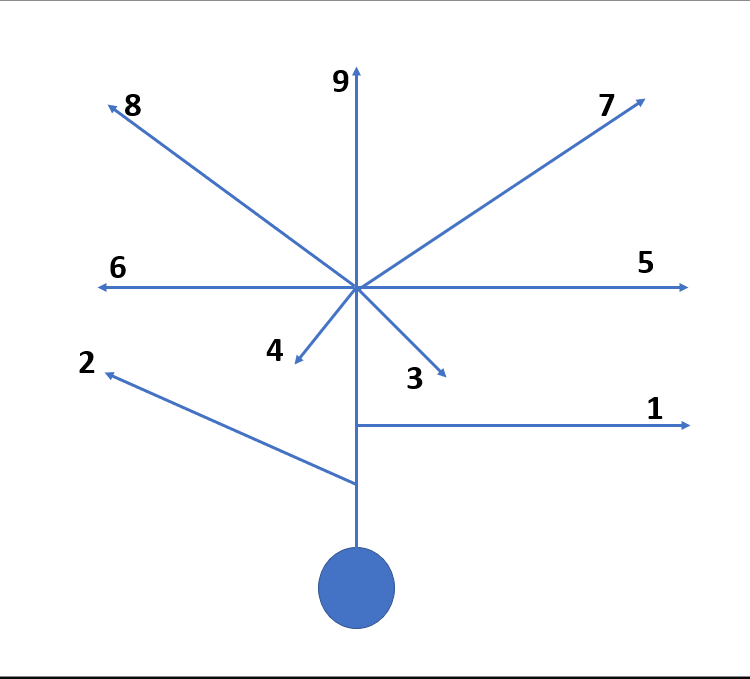The route tree in American football is a concept in which everything branches off the “go” route, or vertical route. A vertical is the route in which the receiver runs straight down the field. Coaches can use this flag football route tree, even though it’s used in all types of American football. Each route is given a number 0-9 to make it easier on you as a coach or for your quarterback to give audibles, or change the play, on the fly.
0: Hitch
Known on an elementary school playground as “five yards and turn around.” But there’s a lot more to it than that. As a receiver or a coach, look to dip the hips and turn around quickly, squaring shoulders with the quarterback to give him a perfect target, and then coming back towards the quarterback to create an easier throw.
Get a 7-on-7 Flag Football Playbook free.
1: Out
Run straight 5 yards up the field, then turn towards sideline and run parallel to the line of scrimmage. Some key points to this route is that the cut should be 90 degrees. The route should never be rounded.
2: Slant
Generally run with 3 steps vertical, but it can be run with 1 or even 5. After your vertical steps cut inside at a 45 degree angle and keep running it until the ball is thrown or play is over.
3: 10 yard comeback
Run vertical for the first ten yards. Proceed to turn to the outside and run at a 45 degree angle towards the line of scrimmage. It is very important to do a mandatory outside release, simplified with the acronym of MOR.
4: 10 yard inside comeback
Not the best route to have in the playbook, or run in game, but its here. I personally prefer to run and use the 3 route, but a 4 is the same as a 3 but you come inside towards the quarterback at a 45 degree angle.
5: 10 yard out
Run the same as a 5 yard out but 10 yards. The most important part of this is actually the throw. Your QB has to be really good to throw an out well but a 10 yard out requires a cannon of an arm. I would refrain from use at younger levels, at higher levels it is a great route but a very hard throw.
6: Dig
Same thing as the 10 yard out just inside. Caution trying to throw this because there are a lot of people in the middle of the field, however it is an easier throw.
7: Corner
This corner routes length depends on how the coach and players want to run it, and sometimes the angles and distance increase and decrease with different play calls. But the general length of the vertical portion is 8-12 yards. At the end of the vertical portion, there is a cut at 45 degrees towards the sideline and away from the quarterback
8: Post
A post is similar to a corner where there is no definitive answer on how long to stay vertical. After the vertical part, proceed to run towards the goal post down the field.
9: Vertical
Most players favorite route in the flag football route tree! This route is very cut and dry, you simply do a MOR (mandatory outside release) and the continue straight down the field. Try and help your quarterback throw it to the outside shoulder or the shoulder closest to the sideline.
All of the routes are fantastic to use especially in 7 on 7 football. They allow you to move fast and efficiently, with everyone knowing what to do. If you are in high school I would typically refrain from using them because coaches are more experienced and know what you are trying to do. But in middle and elementary school, they make your offense unpredictable and unstoppable.

